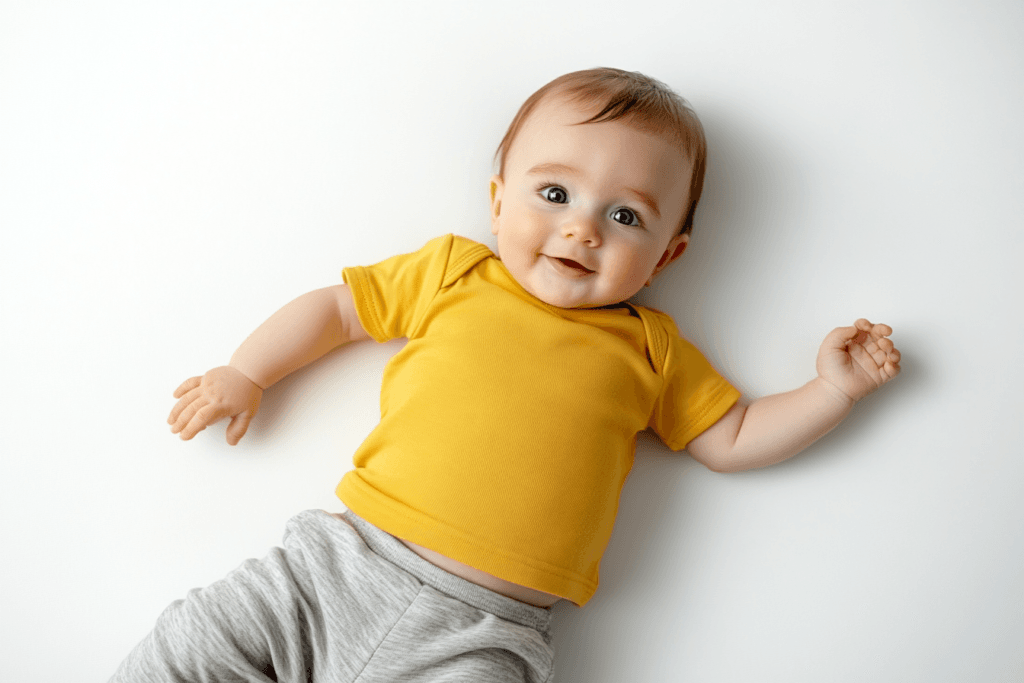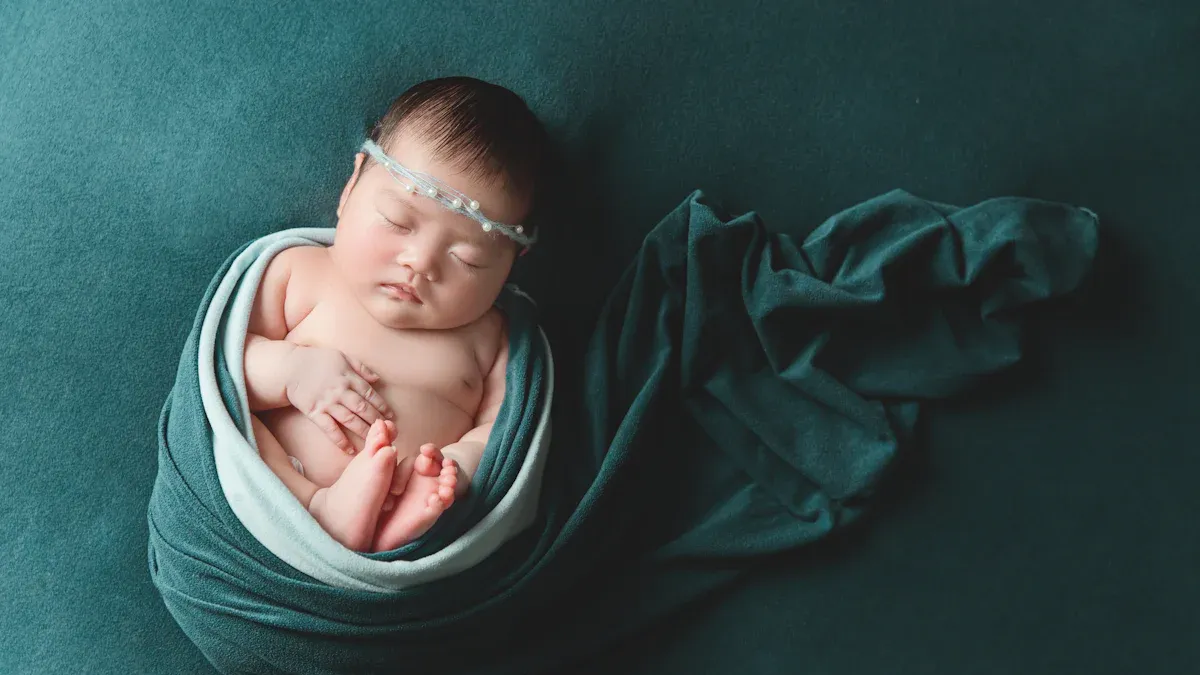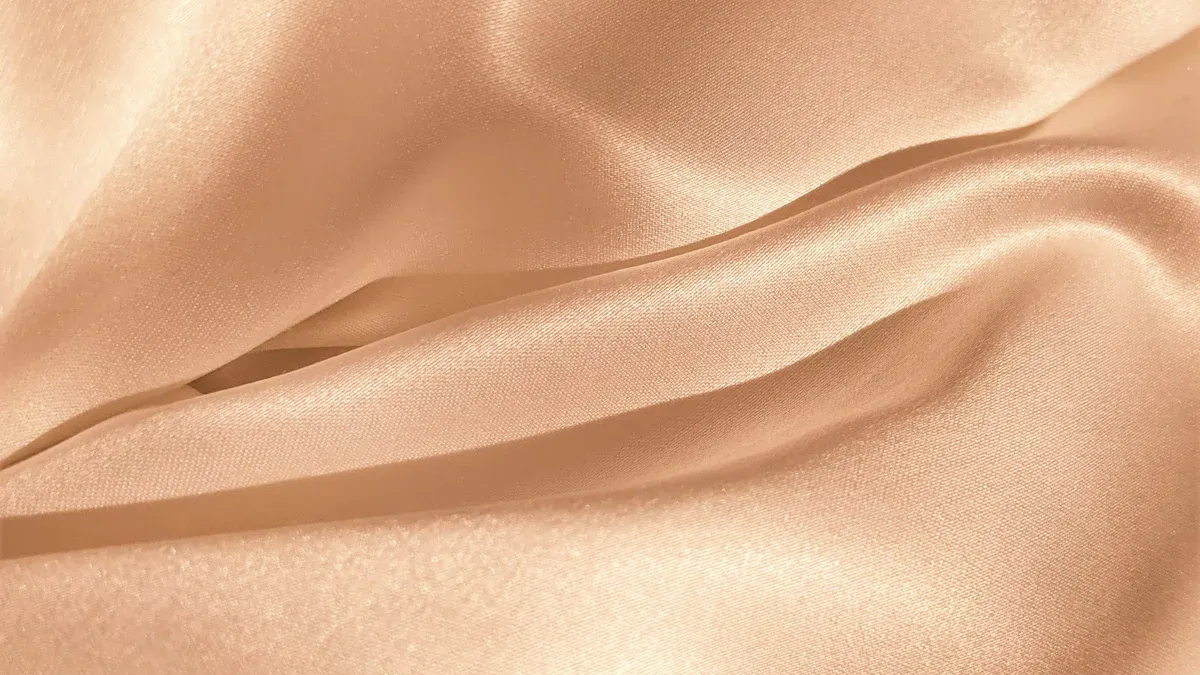
When picking baby clothes, choose soft and breathable fabrics. Bamboo and viscose are gentle on sensitive skin. They are hypoallergenic, so they lower irritation risks. These fabrics are tested for safety under CPSC rules. They are checked to be free of harmful things like lead. Their smooth feel makes them great for babies. But, making these fabrics uses chemicals that might worry some parents. For safety, buy certified items from trusted brands.
Key Takeaways
- Bamboo and viscose fabrics are soft, airy, and gentle. They are great for babies with delicate skin.
- Pick certified bamboo and viscose items to stay safe. This lowers the chance of harmful chemicals.
- Bamboo fabric keeps babies cool in heat and warm in cold.
- Check for eco-friendly labels like OEKO-TEX® and GOTS. These support green and safe baby clothing.
- Wash new bamboo and viscose clothes before use. This removes leftover chemicals and keeps your baby safe.
What Are Bamboo and Viscose Fabrics?
Bamboo Fabric Basics
Bamboo fabric comes from bamboo plant pulp. It feels very soft, even softer than cotton. This makes it perfect for baby clothes because it’s gentle on skin. Bamboo fabric also helps control temperature. It soaks up sweat and lets air pass through. This keeps babies cool in summer and warm in winter.
Another great thing about bamboo fabric is it’s hypoallergenic. It lowers the chance of skin irritation. This makes it good for newborns or babies with eczema. Bamboo fabric is also strong and stays soft after many washes. These features make it a favorite for parents who want comfy and useful baby clothes.
How Bamboo Becomes Viscose
To make viscose, bamboo is turned into fabric using chemicals. First, cellulose is taken from bamboo with sodium hydroxide. Then, carbon disulfide is added to make a thick liquid. This liquid is pushed through tiny holes into a chemical bath. There, it turns into fibers. The fibers are cleaned and bleached to make rayon yarn for bamboo viscose fabric.
This process makes a soft and airy fabric but can harm nature. Chemicals like carbon disulfide can hurt the environment if not managed well. Some companies recycle these chemicals to reduce harm. When buying bamboo or viscose clothes, pick brands that care about the planet and your baby’s safety.
Benefits of Bamboo and Viscose for Baby Clothing

Gentle on Skin and Hypoallergenic
Bamboo and viscose are great for babies with sensitive skin. They feel soft and smooth, which helps avoid irritation. These fabrics are hypoallergenic, meaning they rarely cause allergies. If your baby has eczema or allergies, bamboo clothes can ease itching.
- Bamboo viscose lets air flow, keeping your baby cool and dry.
- It helps prevent overheating, which can cause rashes or discomfort.
- Babies in bamboo clothing often have fewer skin problems and feel better.
Using hypoallergenic fabrics like bamboo and viscose keeps your baby comfy and protects their skin.
Breathable and Temperature-Friendly
Babies need clothes that work well in all seasons. Bamboo and viscose fabrics help control body temperature. They pull sweat away from the skin, keeping babies dry in hot weather. In cold weather, these fabrics keep babies warm and cozy.
Bamboo viscose allows air to pass through, stopping overheating. This makes it perfect for active babies or those in warm places. With bamboo and viscose, your baby stays comfy no matter the season.
Strong and Easy to Care For
Baby clothes need to handle lots of washing and wear. Bamboo and viscose fabrics are tough and stay soft after many washes. They don’t pill or fade easily, so clothes look nice longer.
Taking care of bamboo clothes is easy. Most can be machine-washed gently, saving time. Their strength means you replace them less often, saving money. Bamboo and viscose offer long-lasting quality and simple care, ideal for busy parents.
Safety Concerns of Bamboo and Viscose
Risks from Chemical Processing
Making viscose from bamboo uses strong chemicals. These include sodium hydroxide, carbon disulfide, and sulfuric acid. These chemicals break bamboo pulp into soft fabric. If not handled well, they can harm nature. For instance, sodium hydroxide can hurt plants and animals. Up to half of carbon disulfide can escape into the air. This causes pollution and may harm nearby people.
Factory workers face risks from these chemicals too. Carbon disulfide exposure can cause nerve damage or cancer. Nearby communities may also be affected if waste is not managed safely. Some factories recycle chemicals to lower harm. But not all companies do this. When buying bamboo clothes, pick brands that use safe methods.
Concerns for Sensitive Skin
Bamboo and viscose are called hypoallergenic but may still cause issues. Chemicals like caustic soda and carbon disulfide are used in production. These are washed out, but some might stay in the fabric. Leftover chemicals can irritate sensitive skin, especially for babies.
To avoid problems, buy clothes with safety certifications like OEKO-TEX or GOTS. These labels mean the fabric is tested for harmful substances. Always wash new clothes before your baby wears them. This helps remove any leftover chemicals. By being careful, you can enjoy bamboo fabrics safely.
Environmental Impact of Bamboo and Viscose

How Bamboo Helps the Environment
Bamboo is known for being eco-friendly. It grows fast, needs little water, and doesn’t need chemicals like pesticides. This makes it better for the planet than cotton or synthetic materials. Bamboo also absorbs more carbon dioxide and gives off more oxygen than many plants. This helps fight climate change.
Still, how bamboo is processed affects its eco-friendliness. Bamboo linen and bamboo lyocell are made using safer methods. These processes avoid harmful chemicals and reuse resources. But making bamboo viscose often uses toxic chemicals that can harm nature. Looking at the full life cycle of bamboo products shows their real environmental impact.
Problems with Making Viscose
Turning bamboo into viscose uses strong chemicals like sodium hydroxide and carbon disulfide. If factories don’t handle these well, they can pollute air and water. Traditional methods often release these chemicals, hurting nature and nearby people.
Newer methods, like closed-loop systems, help reduce this damage. These systems recycle most of the chemicals, cutting down waste and pollution. Bamboo lyocell uses this process, making it a greener choice than bamboo viscose. When buying fabrics, pick brands that use these eco-friendly methods.
Eco-Friendly Bamboo Certifications
Certifications help you find bamboo and viscose products that are better for the environment. Labels like OEKO-TEX® and GOTS mean the fabric is free from harmful chemicals. The FSC label shows the bamboo comes from well-managed forests.
Other certifications, like Cradle2Cradle and Ecolabel, check the product’s entire life cycle. This includes how it’s made and disposed of. Choosing certified products supports eco-friendly practices and helps protect the planet.
Alternatives to Bamboo and Viscose for Baby Clothing
Comparing Bamboo Viscose to Other Fabrics
When picking baby clothes, compare bamboo viscose with other fabrics. Bamboo viscose is soft and breathable, but organic cotton and merino wool are great too.
Here’s how bamboo viscose compares:
- Bamboo is 20% more breathable than cotton, allowing better airflow.
- It absorbs 60% more moisture than cotton, keeping babies dry.
- Bamboo stays antibacterial even after many washes, unlike cotton.
Organic cotton is grown without harmful pesticides, making it gentle on skin. Merino wool naturally adjusts temperature, keeping babies warm or cool. Bamboo viscose is soft and manages moisture well. But organic cotton and merino wool are safe and eco-friendly options too.
Tips for Choosing Baby-Safe Fabrics
Choosing the right fabric keeps your baby comfy and safe. Pick materials that are soft, breathable, and free from harmful chemicals. Tencel and organic cotton are great choices. Tencel, like Lenzing TENCEL™ Lyocell, is hypoallergenic and breathable. It also wicks moisture, perfect for sensitive skin.
Organic cotton is another safe pick. It’s grown without synthetic pesticides, lowering skin irritation risks. Look for certifications like OEKO-TEX® or GOTS. These prove the fabric is tested for harmful substances. Washing new clothes before use removes leftover chemicals.
By picking certified, eco-friendly fabrics, you ensure your baby’s clothes are safe and cozy.
Bamboo and viscose fabrics are safe and comfy for babies. They are soft, breathable, and eco-friendly when certified. But, it’s important to know about their chemical processing and environmental effects. Certified bamboo viscose is often better than organic cotton in being sustainable and efficient.
| Feature | Bamboo Viscose Advantages | Other Options (e.g., Organic Cotton) |
|---|---|---|
| Chemical Use | Uses sodium hydroxide, allowed by GOTS if handled well. | Often uses harsher chemicals. |
| Environmental Impact | Closed-loop systems recycle 100% sodium hydroxide and 74% carbon disulfide. | Less effective at reusing chemicals. |
| Carbon Footprint | Absorbs 5x more CO2 and makes 35% more oxygen than trees. | Absorbs less CO2. |
| Land and Water Usage | Produces 10x more fabric per acre with much less water. | Needs more land and water for the same amount. |
| Pesticide Use | Grows naturally without needing chemical pesticides. | Regular cotton depends on pesticides. |
When picking baby clothes, certified bamboo viscose is a great choice. Organic cotton and merino wool are also good for eco-friendly parents.
FAQ
Why is bamboo viscose better than cotton for baby clothes?
Bamboo viscose is softer and absorbs more moisture than cotton. It keeps babies dry and comfy. It also lets air flow better, helping with temperature control. Bamboo grows without pesticides, making it kinder to the planet.
Are bamboo and viscose safe for babies with eczema?
Yes, these fabrics are gentle and hypoallergenic for sensitive skin. They help reduce irritation and stop rashes. Always pick certified products to avoid harmful chemicals. Washing new clothes first adds extra safety.
How do you know if bamboo viscose is eco-friendly?
Check for labels like OEKO-TEX®, GOTS, or FSC. These show the fabric meets safety and eco-friendly standards. Brands using closed-loop systems also lower chemical waste, making them greener.
Do bamboo and viscose shrink after washing?
These fabrics might shrink a little in hot water. To stop this, wash in cold water on a gentle cycle. Air drying helps keep the fabric soft and in shape. Always follow care instructions on the tag.
Does bamboo viscose last as long as other fabrics?
Yes, bamboo viscose is strong and doesn’t pill easily. It stays soft even after many washes. Gentle washing and avoiding harsh soaps help it last longer. This makes it a smart choice for baby clothes.
